József Damkó's sculptures are seen every day all over the capital, whether we are visiting Pest or Buda. At the same time, his name is lesser-known, he is mostly considered as a student of Alajos Stróbl. He deserves more. Born 150 years ago, on 15 October 1872, the artist was a student of Lajos Mátrai and Antal Loránfi at the School of Applied Arts in Budapest and then studied at Alajos Stróbl's master school for six years.
After that, in 1899, he attended the famous Julian Academy in Paris with a scholarship but also spent years on a study trip in Rome. At first, he designed commemorative medals, such as the Saint Ladislas medal design made at the invitation of the Society of Applied Arts, which the judges considered so dynamic that he received praise for it, even though he did not get the order. The Saint Anne plaque is also worth mentioning, the design of which already shows his religious dedication.
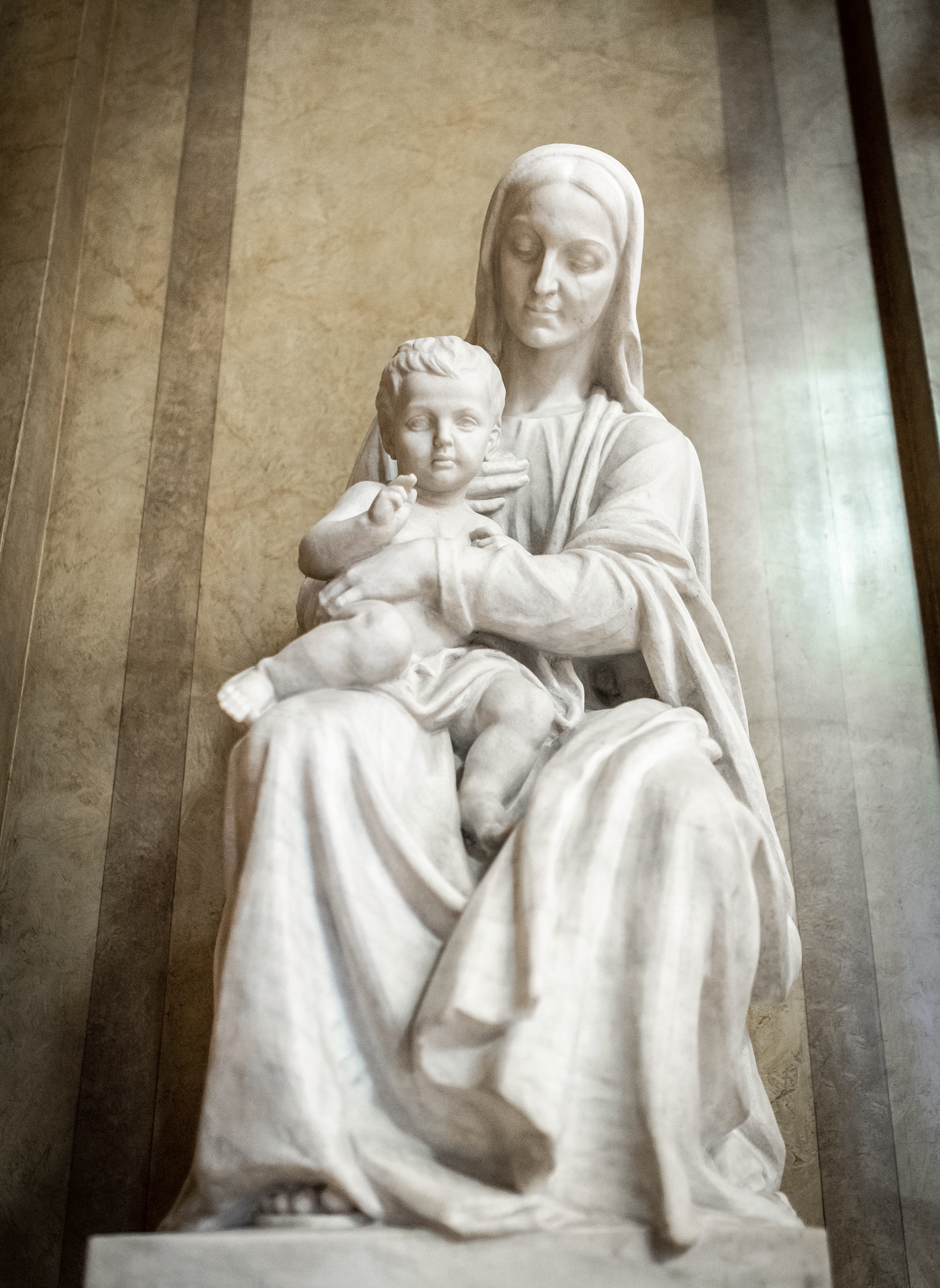
Virgin Mary with the Child. The statue, made in 1900, can be found in the Budapest Inner-City Parish Church of the Blessed Virgin Mary (Photo: Balázs Both/pestbuda.hu)
The young artist achieved success with his small-scale terracotta sculptures depicting Hungarian folk scenes, which, according to one of his critics, "radiate the depth of artistic work done with love." Then, at the turn of the century, he also received large-scale commissions, many of which were related to church art.
Damkó's first two large-scale sculptural works can be found in the oldest church in Pest, the Budapest Inner-City Parish Church of the Blessed Virgin Mary (5th District, Március 15 Square). The two sculptures created in 1900, the Virgin Mary with the Child and Saint Joseph with the Child Jesus, are located opposite each other near the main entrance, where a triumphal arch separates the Baroque part of the interior from the Gothic sanctuary. In front of the northern pillar of the triumphal arch, the Virgin Mary with the Child can be seen, and in front of the southern pillar Saint Joseph with the Child Jesus.
.jpg)
Saint Joseph with the Child Jesus, in the Budapest Inner-City Parish Church of the Blessed Virgin Mary (Photo: belvarosiplebania.hu)
In line with the general depictions, Damkó portrays baby Jesus as a full-of-life, chubby kid, who - as if projecting his own divinity - raises his hands in a blessing gesture. Virgin Mary leans slightly forward with tender love. In the case of the statue of Saint Joseph and Jesus, the boy is now older, Joseph holds a cross in his hand, which the child touches thoughtfully. In the movement, the task given to him by the Father, the redeeming role of Jesus, can be clearly recognised. It is known that the church suffered severe damage during World War II, but the two statues survived those times without harm.
The inner city centre of the Piarists was completed between 1914 and 1918, in the area bounded by Március 15 Square - Piarista Street - Váci Street - Szabad Sajtó Road. The Piarist chapel was consecrated in the building in 1918, two of the six side altars were carved by József Damkó.
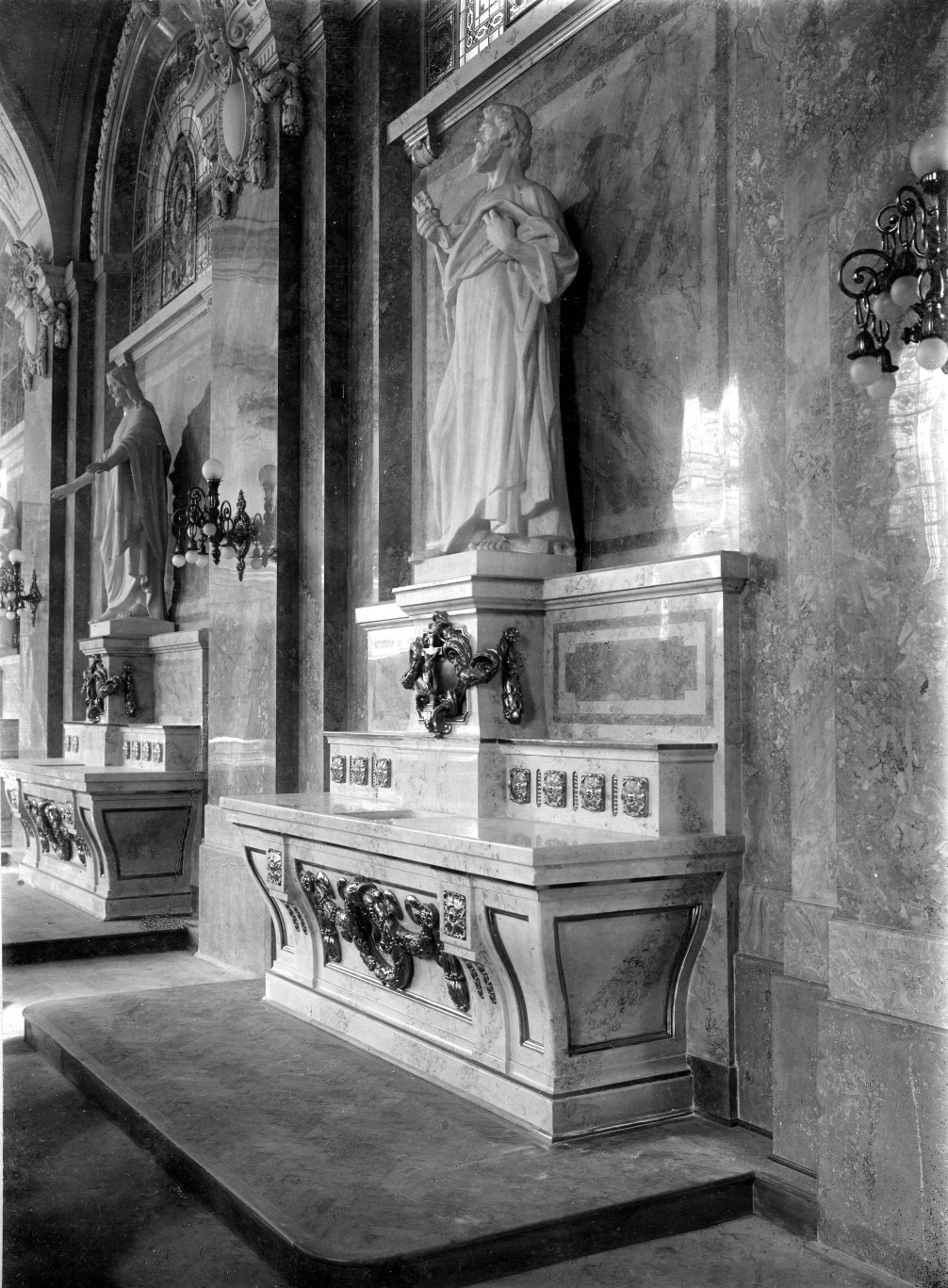
The Saint Peter altar with the statue of József Damkó in the chapel. Nowadays, it stands in the auditorium of Sapientia College (Source: archivum.piarista.hu)
Two statues of Damkó can also be seen in the parish church of Lipótváros, i.e., in Saint Stephen's Basilica, which was consecrated on 9 November 1905, next to the columns closest to the altar. One is the Heart of Jesus statue from 1925, the other is the Saint Anthony of Padua statue from 1928. The statue of Jesus, made of Ruszkica marble, stands in the nave on the left, next to a column, and points to his heart with three fingers. The three fingers refer to the Holy Trinity, the three divine persons (Father, Son, Holy Spirit).
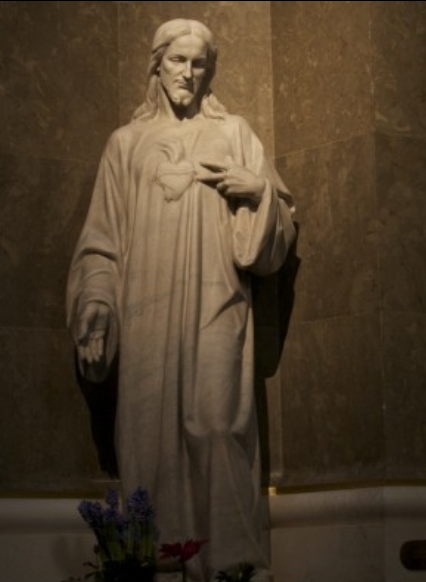
The Heart of Jesus statue in St. Stephen's Basilica (Source: bazilika.biz)
Opposite the statue, in the nave on the right, is a full-length statue of Saint Anthony of Padua carved from white marble. The educated theologian and highly influential preacher is immortalised in church art in several ways, for example sometimes with a fish in his hand, sometimes with a bushel. From the Baroque era, one of the most popular depictions was showing Saint Anthony together with Jesus. Damkó also chose this solution.
He also created a relief in honour of Pope Pius XI. The work was placed in the chapel of St. Leopold's Sacristy, which has been called the Holy Right Chapel since 1983. The inscription on the relief made in 1929 is as follows: IN REMEMBRANCE OF A MASS, HELD BY ACHILLES RATTI POPE PIUS XI IN THIS CHAPEL IN THE MONTH OF JUNE 1891.
We cannot leave out the sculptural decorations of the Saint Emeric Parish Church, which was consecrated on 6 November 1938, either, since the church is one of the jewels of the surroundings of the Bottomless Lake. At the time, the lake was designed by landscape architect Mihály Mőcsényi in a way that the church would be reflected in its water.
Above the entrance, on the ledge of the balcony, four Cistercian saints can be seen: the statues of Saint Stephen Harding, Saint Bernard of Clairvaux, Pope Eugene III and Saint Robert of Molesme. These, as well as the Our Lady of Hungary on the tympanum and the worshipping Hungarian saints, are the work of József Damkó and Béla Markup. It is not known today who modelled which, but according to László Prohászka's study published in Vigilia, Damkó's signature can definitely be seen on the statue of Pope Eugene III.
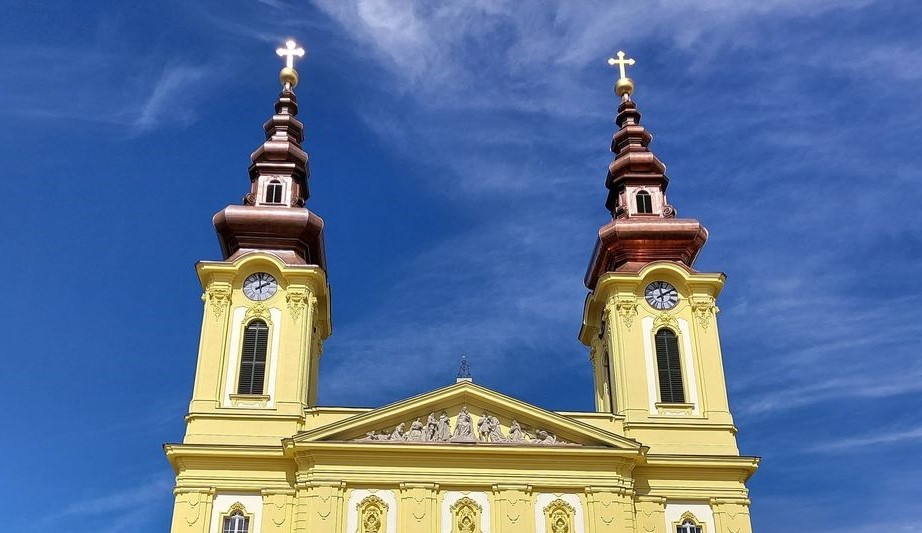
The tympanum of the facade of the Saint Emeric Parish Church in the 11th District (Photo: szentimre.hu)
Among his public sacred works, the statue of Saint Elizabeth of the House of Árpád stands out. It was erected in 1932, on the 700th anniversary of the saint's death in Rózsák Square in front of the Church of St. Elizabeth which was designed by Imre Steindl, and consecrated on 16 May 1901.
Until the statue was erected, the square was called Szegényház Square, and then it got the name Rózsák Square, which refers to Elizabeth, the patron saint of the poor, and the miracle of the rose. (The story most associated with Elizabeth is the rose miracle: Elizabeth brought bread to the poor in her apron, and they turned into roses when her husband questioned her.)
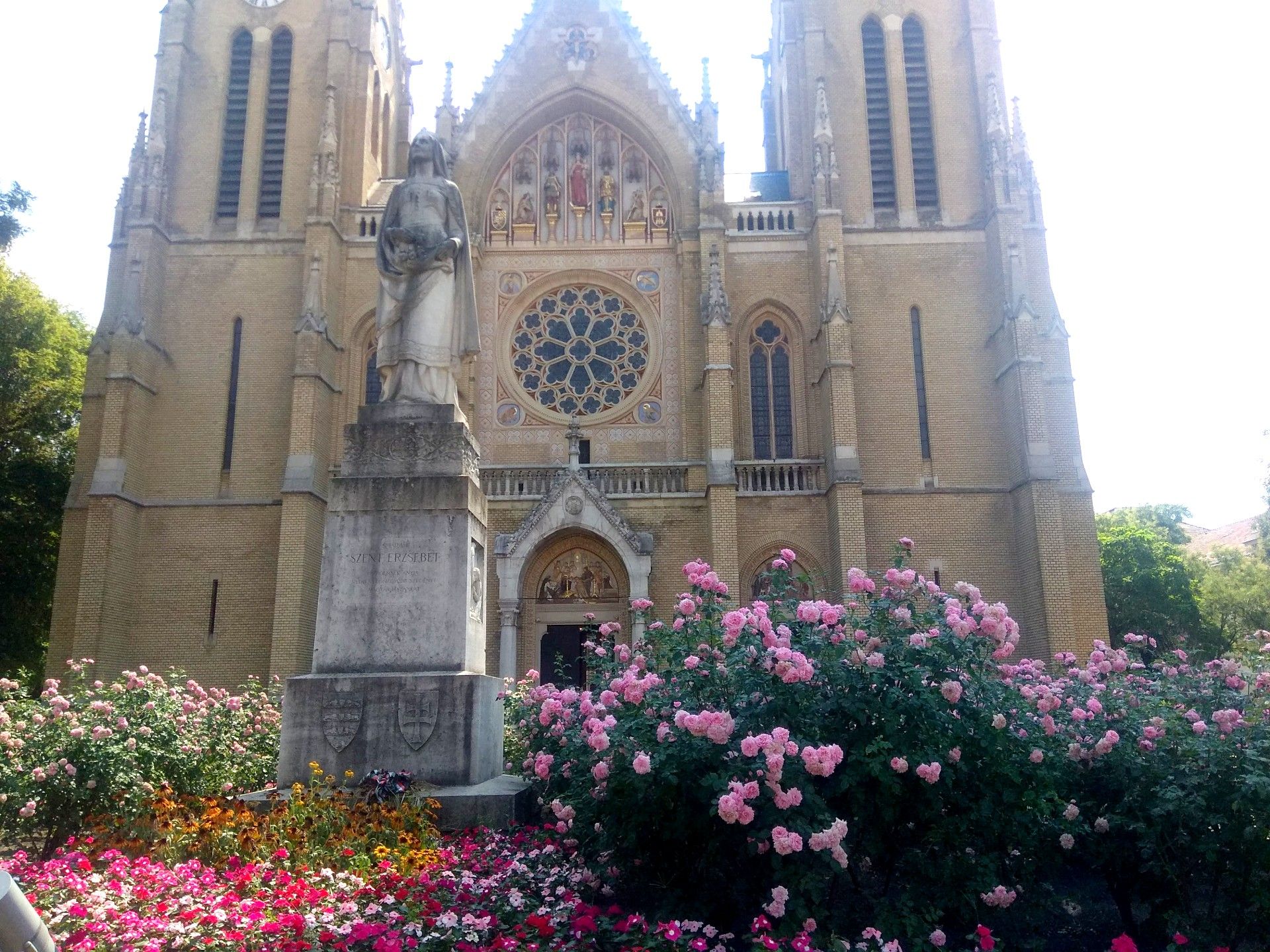
Statue of Saint Elizabeth of the House of Árpád on Rózsák Square (Photo: pestbuda.hu)
The powerful and expressive work of József Damkó is the statue of St. John of Capistrano, which was erected in Buda Castle, on the then Nándor Square, in front of the Military History Museum building - the former Nándor Barracks. Capistrano, who was a Franciscan monk, theologian and preacher, is known as an enthusiastic recruiter of the Crusader armies in the fight against the Ottoman Empire.
He took part in the battle of Nándorfehérvár [today's Belgrade], after which he died of the plague (shortly after administering the last rites to János Hunyadi, who also suffered from the plague). His statue in Buda, completed on the 465th anniversary of his death, depicts him in monk's clothes, raising the flag high with his right hand, the pole of which ends in an apostolic double cross.
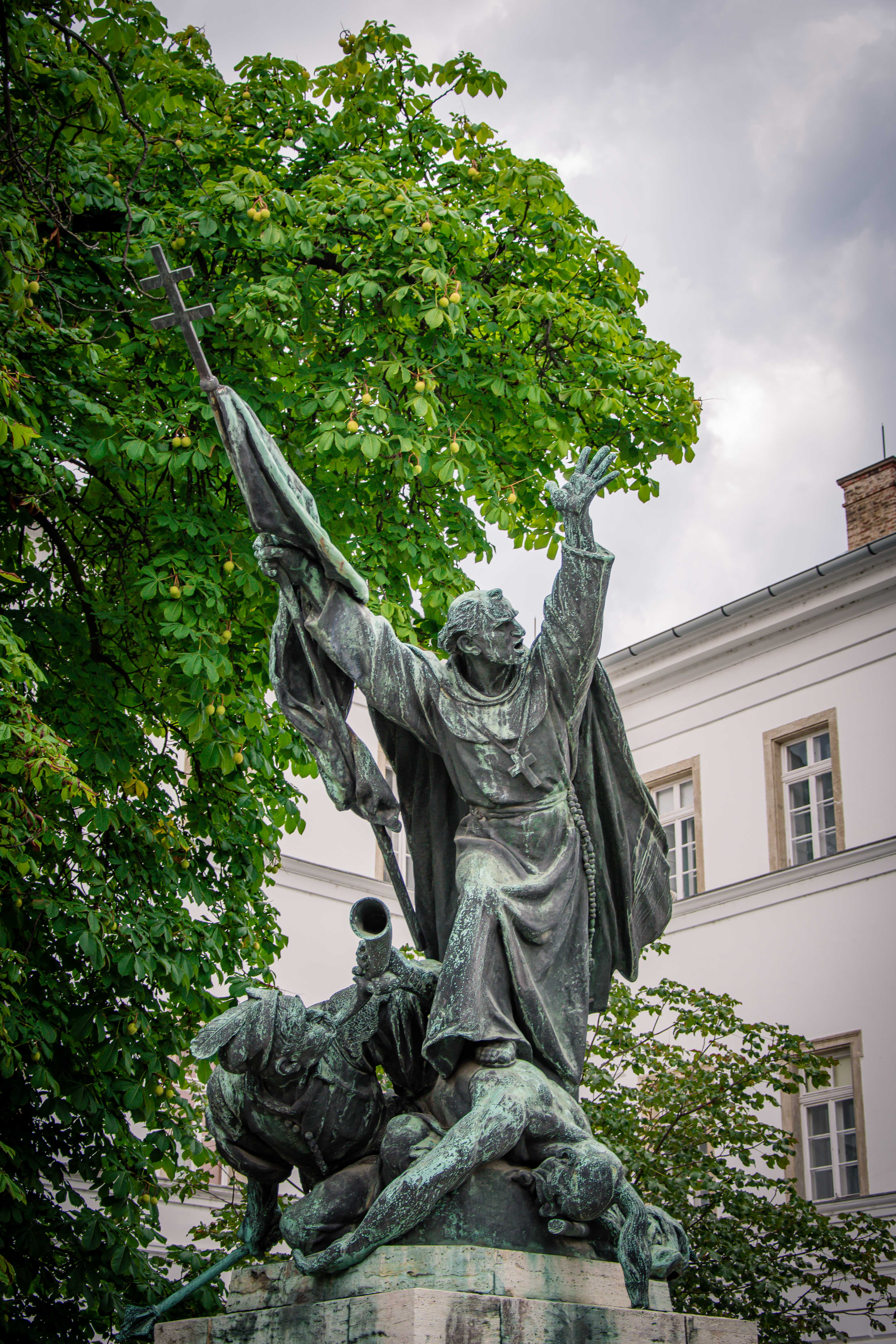
The statue of St. John of Capistrano on Kapisztrán Square. József Damkó's work was inaugurated in 1922 (Photo: Róbert Juharos/pestbuda.hu)
Those who have already visited the nearby Hess András Square in the 1st District will certainly not have missed another powerful statue depicting Pope Innocent XI. The statue was made for the 250th anniversary of the liberation of Buda from Turkish rule, in 1936. Its plinth was designed by architect Gyula Wälder from limestone. On the front of the work, under the papal coat of arms, there is the following inscription: POPE INNOCENT XI / in memory of / the saviour of Hungary / the grateful nation / 1686–1936. One of the statue's strengths is the firm movement of its right hand as it holds the triple cross while the left hand points towards the sky.
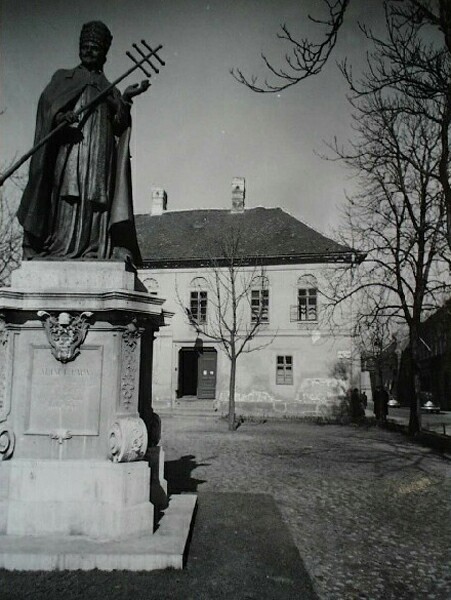
Statue of Pope Innocent XI on Hess András Square in 1940 (Source: budavar.btk.mta.hu)
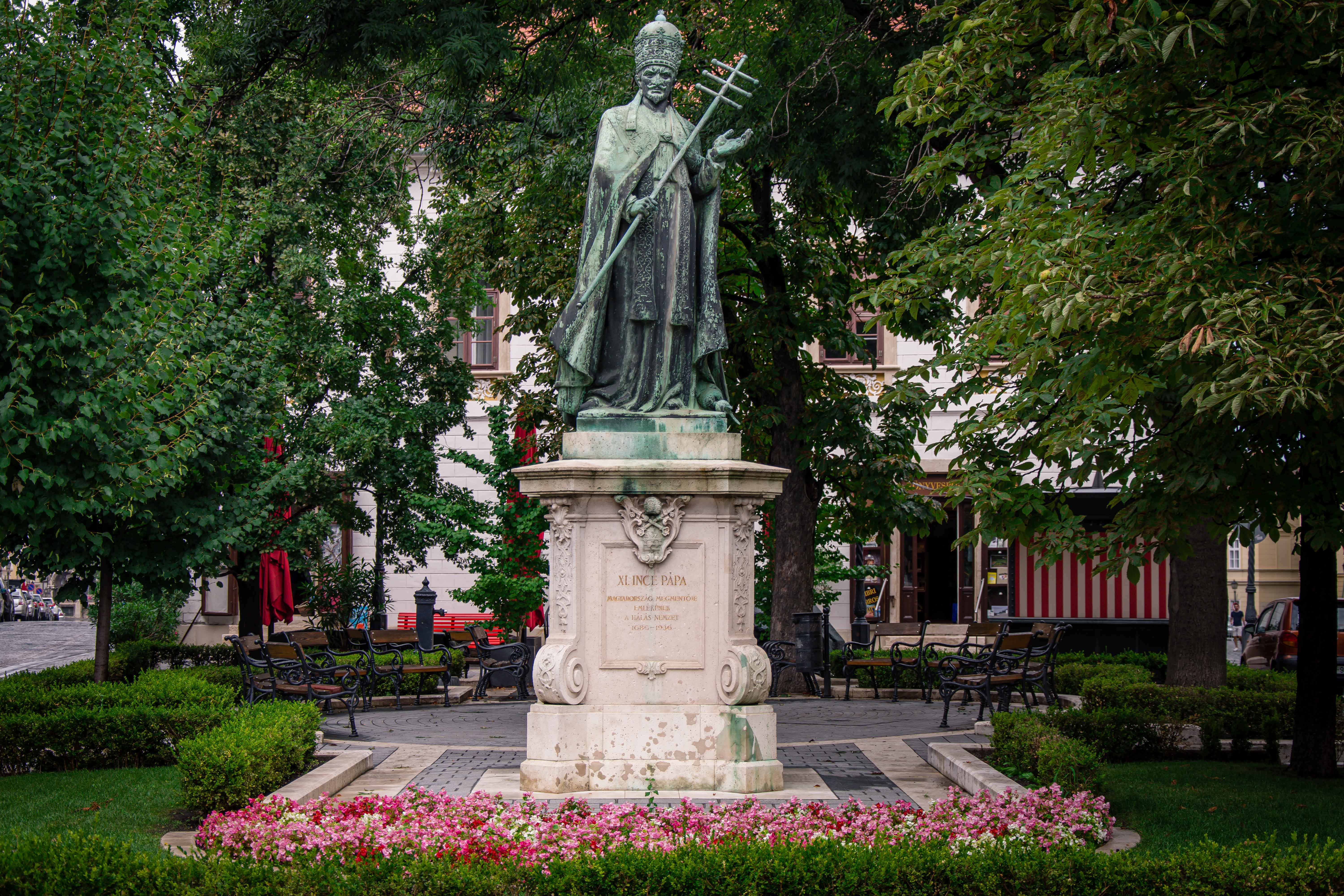
Statue of Blessed Pope Innocent XI in the greenery of today's Hess András Square. József Damkó's work was unveiled in October 1936 (Photo: Róbert Juharos/pestbuda.hu)
The sculptor also created several tombstones, of which Pestbuda will now highlight one of the most beautiful, the tombstone of the Árkay Family. Two children of Kálmán Árkay died, one in 1892, and the other's son in 1897.
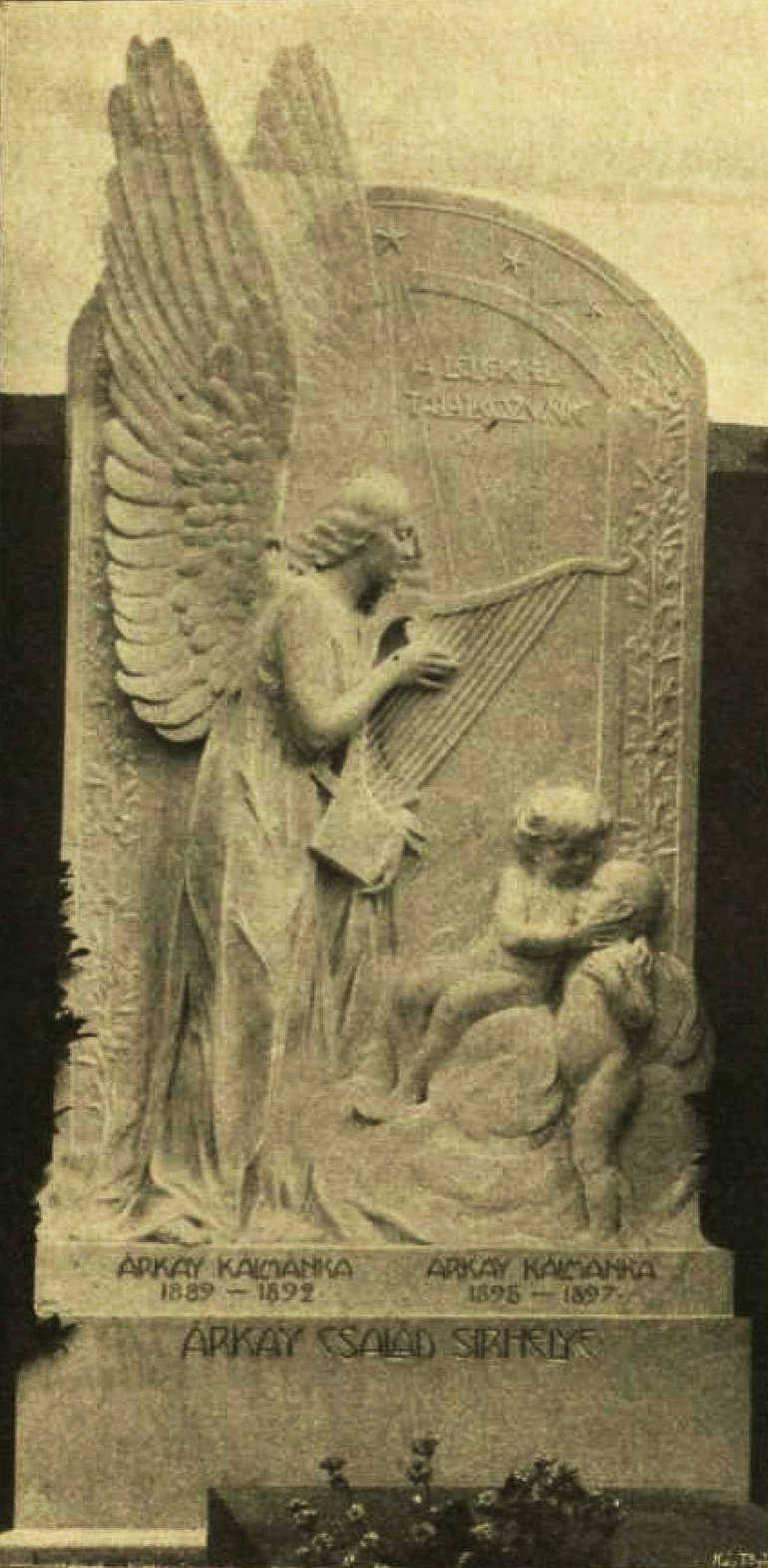
The artist also made tombstones. The Árkay Family tomb on Fiumei Road (Photo: oszk.hu)
The sculptor depicted an angel playing the lute and two children on the tombstone. In 1899, the work was also presented at the Spring Exhibition of the Kunsthalle, even before its installation in 1900.
If someone walks up to the top of the Budafok hills, in Sarló Street, they will find a mausoleum in a very dilapidated state. The mausoleum was built for József Törley, who died in 1907, by his widow, Irén Sacelláry, at the highest point of the Törley Estate. There are several dates for the construction of the mausoleum in the literature: according to some sources, construction began in 1908 and was completed in 1910, according to others, it was handed over in 1911. The facade reliefs of the Art Nouveau mausoleum designed by Rezső Vilmos Ray were sculpted by Damkó. Next to the entrance, a delicately drawn female figure can be seen on both sides, above it is the coat of arms of the Törley and Sacelláry Families and the inscription.
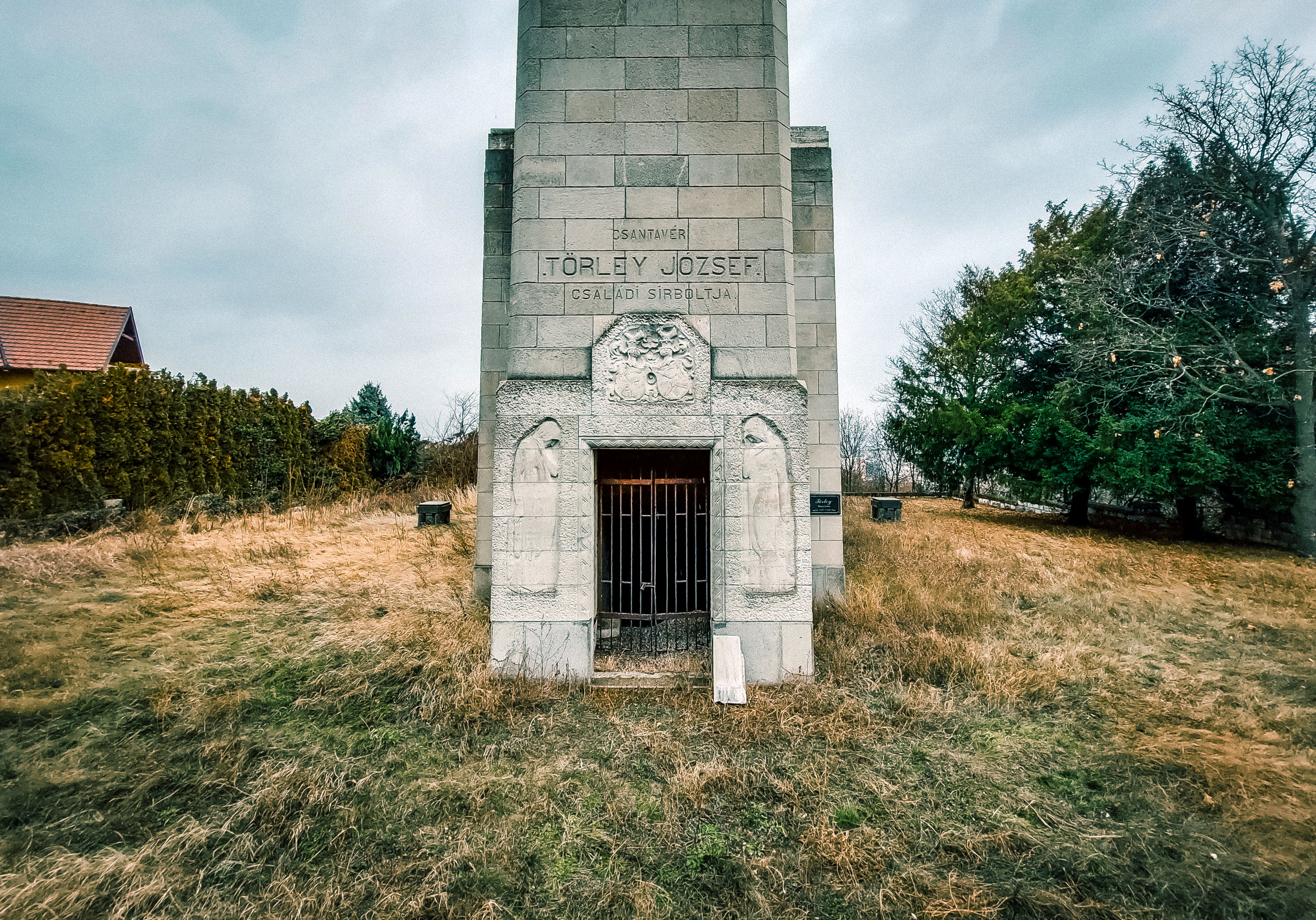
The reliefs of the Art Nouveau mausoleum of the Törley Family in Budafok were made by József Damkó in 1909 (Photo: Balázs Both/pestbuda.hu)
Unfortunately, the monument has been neglected for decades. Sometimes homeless people live in it, sometimes people break into it aimlessly. Its rescue is waiting.
Among his secular works, the bust of his master Alajos Stróbl in the Epreskert should be mentioned. Damkó also did the allegorical sculptural decorations of the Epreskert sculpture studio.
A bust of his master, Alajos Stróbl, in the Epreskert (Photo: Balázs Both/pestbuda.hu)
His works can also be found on Kossuth Square. The old Palace of Justice was built in 1896 based on the plans of Alajos Hauszmann, which also housed the Curia (later the building of the Ethnographic Museum). The sculptural figures on the attic pedestals above the main cornice were created by Alajos Stróbl's sculptor students under his supervision. Among these, the female figure shaping the Allegory of Literature is the work of Damkó. The beautifully modelled figure holds a pen in one hand and a book in the other. In the same place, he also created the Allegory of Sculpture, which is a male figure holding his work in one hand and a chisel in the other.
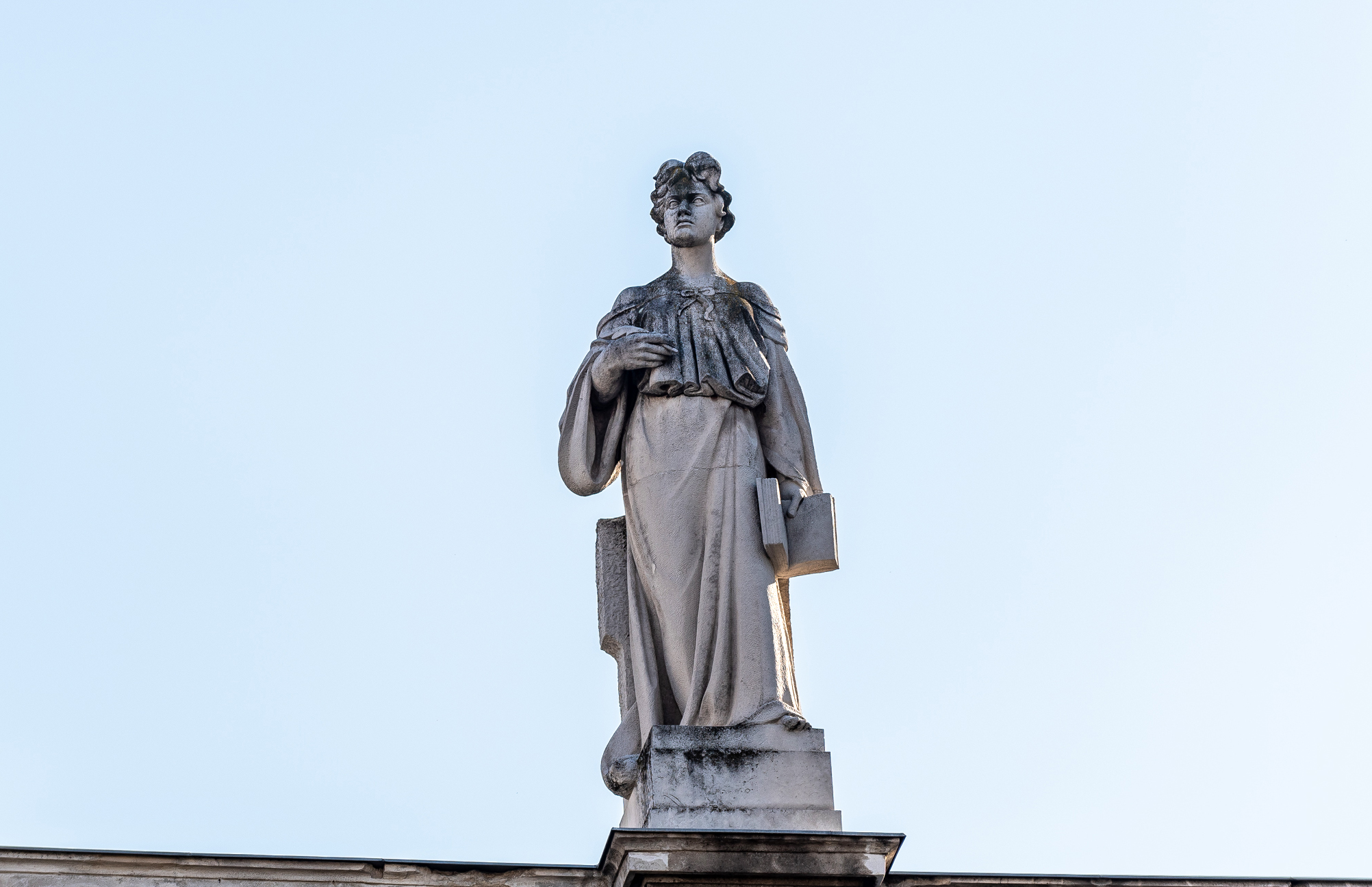
The allegorical female figure, which represents literature, is placed on the former Palace of Justice on Kossuth Square (Photo: Balázs Both/pestbuda.hu)
In addition to all this, Damkó also had many heroic monuments, but his works can also be found in the Parliament. In the first years of the 20th century, a series of pyrogranite sculptures were made to decorate the house, showing domestic occupations. In the lounge of the House of Representatives, there are allegorical works by József Damkó depicting mechanical engineering and construction art. In the case of the latter, the artist modelled a Franciscan nun, holding a model of a Gothic-style church.
József Damkó also made the two huge groups of sculptures seen on the pediment of the former Józsefváros Telephone Centre, his work can also be found on the Baroque building wing of the Vajdahunyad Castle but he also made one of the sculptures in the dome of the royal palace built by Alajos Hauszmann which was demolished after the war.
The art historian János Jajczay summarised his art as follows: "Damkó, the church artist par excellence, once modelled a virgin possessed by her faith, another time a dominique who was looking deep in herself." After World War II, the master no longer received government commissions, he did not make sculptures until his death in 1955, and his career was over.
Cover photo: Statue of Saint Elizabeth of the House of Árpád on Rózsák Square (Photo: Balázs Both/pestbuda.hu)

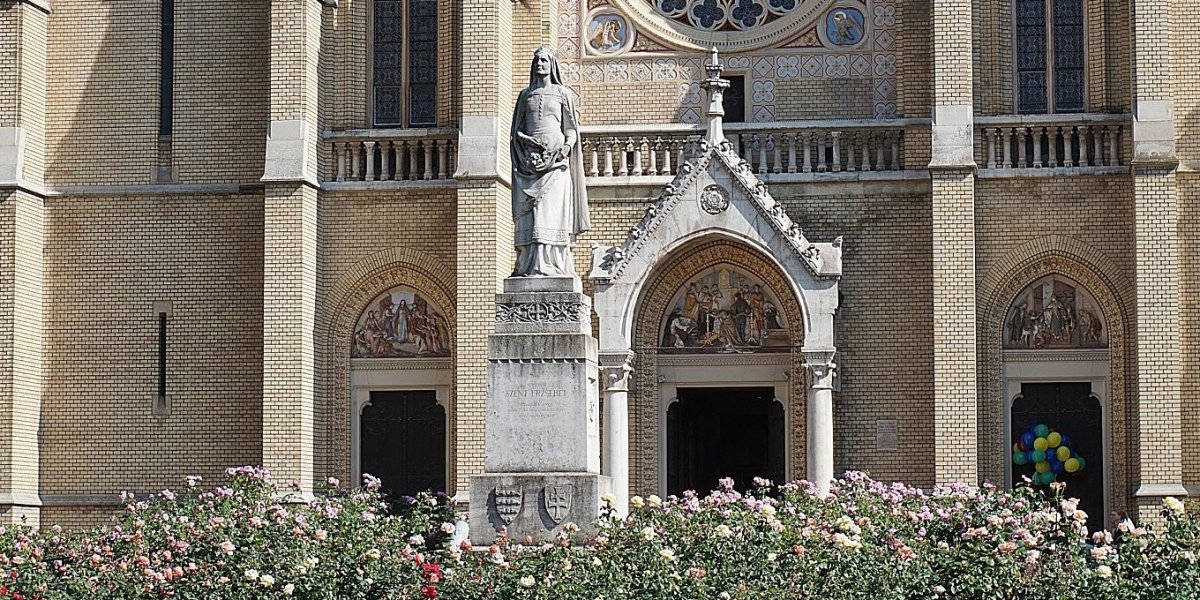
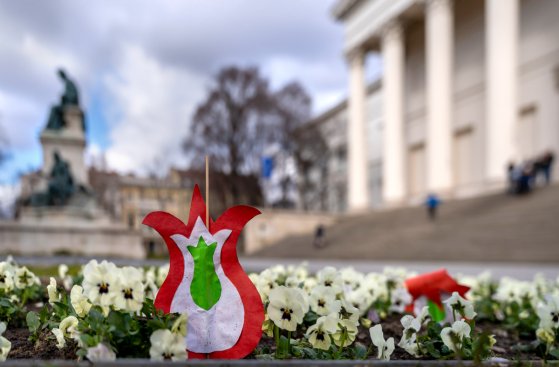





Hozzászólások
Log in or register to comment!
Login Registration